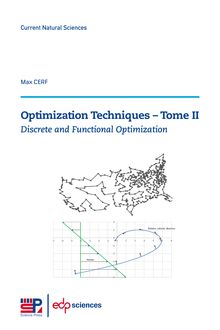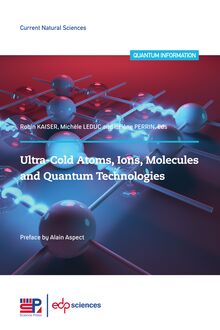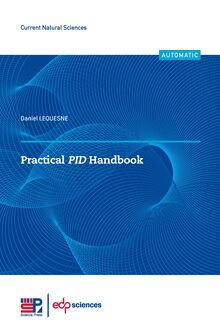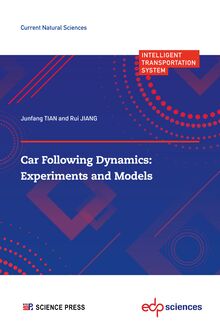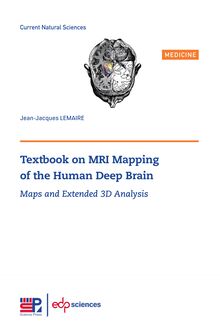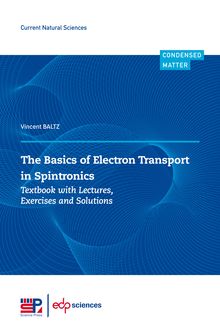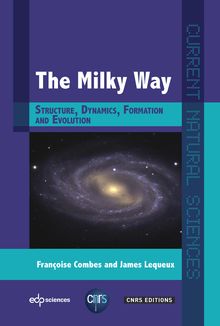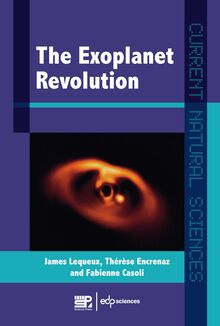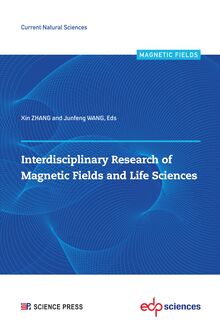-
 Univers
Univers
-
 Ebooks
Ebooks
-
 Livres audio
Livres audio
-
 Presse
Presse
-
 Podcasts
Podcasts
-
 BD
BD
-
 Documents
Documents
-
- Cours
- Révisions
- Ressources pédagogiques
- Sciences de l’éducation
- Manuels scolaires
- Langues
- Travaux de classe
- Annales de BEP
- Etudes supérieures
- Maternelle et primaire
- Fiches de lecture
- Orientation scolaire
- Méthodologie
- Corrigés de devoir
- Annales d’examens et concours
- Annales du bac
- Annales du brevet
- Rapports de stage
La lecture à portée de main
Découvre YouScribe en t'inscrivant gratuitement
Je m'inscrisDécouvre YouScribe en t'inscrivant gratuitement
Je m'inscrisEn savoir plus
En savoir plus

Description
Over the past nine decades, the field of traffic flow studies has witnessed remarkable advancements driven by empirical data. These data have illuminated traffic phenomena like breakdowns, oscillations, and hysteresis. However, despite these strides, the intricate nature of traffic flow and its underlying mechanisms remain subjects of ongoing debate and incomplete comprehension. Robert Herman, the pioneering figure in transportation science, firmly believed in the experimental essence of traffic theory. Unlike conventional practices of collecting limited traffic flow data, conducting traffic experiments empowers control of flow composition and rate, minimizes interference from complex variables, and facilitates the discovery of fundamental characteristics and mechanisms of traffic flow. In alignment with Herman’s conviction, the authors of this book undertook a series of experimental and modeling studies to delve into the intricacies of traffic flow evolution through the lens of car-following dynamics. Rooted in systems science and engineering theory, this book commences with experimental exploration of traffic flow. Employing methods to unearth individual decision-making mechanisms, the evolutionary patterns of group behavior, and their interconnectedness, theoretical models are employed to bridge micro-mechanisms with macro-phenomena. This approach introduces innovative ideas and methods, fostering the refined development of urban traffic behavior and management theory. It makes vital contributions in unraveling driver behavior and the evolution of road traffic flow, transcending conventional theories, and addressing globally recognized transportation challenges. Ultimately, it plays a pivotal role in advancing modern traffic flow theory that aligns with real-world complexities.
Preface . . . . . . . . . . . . . . . . . . . . . . . . . . . . . . . . . . . . . . . . . . . . . . . . . . . . . III
CHAPTER 1
Introduction . . . . . . . . . . . . . . . . . . . . . . . . . . . . . . . . . . . . . . . . . . . . . . . . . 1
1.1 Background . . . . . . . . . . . . . . . . . . . . . . . . . . . . . . . . . . . . . . . . . . . . 1
1.2 Traffic Flow Data . . . . . . . . . . . . . . . . . . . . . . . . . . . . . . . . . . . . . . . . 3
1.2.1 Vehicle Trajectory Data . . . . . . . . . . . . . . . . . . . . . . . . . . . . . . 3
1.2.2 Detector Data . . . . . . . . . . . . . . . . . . . . . . . . . . . . . . . . . . . . . 3
1.3 Traffic Flow Parameters . . . . . . . . . . . . . . . . . . . . . . . . . . . . . . . . . . . 5
1.3.1 Flow Rate . . . . . . . . . . . . . . . . . . . . . . . . . . . . . . . . . . . . . . . . 5
1.3.2 Density and Occupancy . . . . . . . . . . . . . . . . . . . . . . . . . . . . . . 5
1.3.3 Speed . . . . . . . . . . . . . . . . . . . . . . . . . . . . . . . . . . . . . . . . . . . . 5
1.4 Fundamental Diagram . . . . . . . . . . . . . . . . . . . . . . . . . . . . . . . . . . . . 6
1.4.1 Homogeneous, Stationary and Equilibrium Traffic Flow . . . . . . 6
1.4.2 The Fundamental Diagram . . . . . . . . . . . . . . . . . . . . . . . . . . . 6
1.4.3 Some Common Fundamental Diagram Models . . . . . . . . . . . . . 8
1.5 The Characteristics of Traffic Flow Evolution . . . . . . . . . . . . . . . . . . . 12
1.5.1 Congested Traffic and Phantom Jam . . . . . . . . . . . . . . . . . . . . 12
1.5.2 Synchronized Traffic Flow . . . . . . . . . . . . . . . . . . . . . . . . . . . . 13
1.5.3 Traffic Breakdown . . . . . . . . . . . . . . . . . . . . . . . . . . . . . . . . . . 14
1.6 Outline of the Book . . . . . . . . . . . . . . . . . . . . . . . . . . . . . . . . . . . . . . 15
References . . . . . . . . . . . . . . . . . . . . . . . . . . . . . . . . . . . . . . . . . . . . . . . . . . 16
CHAPTER 2
Traffic Oscillation Analysis . . . . . . . . . . . . . . . . . . . . . . . . . . . . . . . . . . . . . . 19
2.1 Some Previously Observed Results of Traffic Oscillations. . . . . . . . . . . 19
2.2 The Platoon Experiments with 25 Cars . . . . . . . . . . . . . . . . . . . . . . . . 20
2.2.1 Experimental Setup . . . . . . . . . . . . . . . . . . . . . . . . . . . . . . . . . 20
2.2.2 Spatiotemporal Features . . . . . . . . . . . . . . . . . . . . . . . . . . . . . 21
2.2.3 The Concave Growth Patterns . . . . . . . . . . . . . . . . . . . . . . . . . 21
2.3 Traffic Oscillation Simulations by Traditional Models . . . . . . . . . . . . . 23
2.3.1 Traditional Models . . . . . . . . . . . . . . . . . . . . . . . . . . . . . . . . . . 23
2.3.2 The Initial Convex Growth Pattern in Traditional Models . . . . 28
2.4 Empirical Oscillation Analysis . . . . . . . . . . . . . . . . . . . . . . . . . . . . . . . 31
2.5 The Platoon Experiment with 50 Cars . . . . . . . . . . . . . . . . . . . . . . . . 37
2.5.1 Experimental Results . . . . . . . . . . . . . . . . . . . . . . . . . . . . . . . . 39
2.5.2 Corroborating Empirical Observations . . . . . . . . . . . . . . . . . . . 44
2.6 The High-Speed Experiment . . . . . . . . . . . . . . . . . . . . . . . . . . . . . . . . 48
2.6.1 Experimental Setup . . . . . . . . . . . . . . . . . . . . . . . . . . . . . . . . . 48
2.6.2 Experimental Results . . . . . . . . . . . . . . . . . . . . . . . . . . . . . . . . 50
2.7 The Lightly Congested Flow Experiment . . . . . . . . . . . . . . . . . . . . . . 51
2.7.1 Experimental Setup . . . . . . . . . . . . . . . . . . . . . . . . . . . . . . . . . 51
2.7.2 Experimental Results . . . . . . . . . . . . . . . . . . . . . . . . . . . . . . . . 52
References . . . . . . . . . . . . . . . . . . . . . . . . . . . . . . . . . . . . . . . . . . . . . . . . . . 58
CHAPTER 3
Car Following Behavior Analysis . . . . . . . . . . . . . . . . . . . . . . . . . . . . . . . . . 61
3.1 The Velocity Distribution Analysis . . . . . . . . . . . . . . . . . . . . . . . . . . . 61
3.2 The Spacing Analysis . . . . . . . . . . . . . . . . . . . . . . . . . . . . . . . . . . . . . 61
3.3 The Platoon Length Analysis . . . . . . . . . . . . . . . . . . . . . . . . . . . . . . . 65
3.4 The Acceleration Analysis . . . . . . . . . . . . . . . . . . . . . . . . . . . . . . . . . . 69
3.5 The Wave Travel Time Analysis . . . . . . . . . . . . . . . . . . . . . . . . . . . . . 76
3.5.1 Some Observed Features of ~snðtÞ Time Series . . . . . . . . . . . . . . 79
3.5.2 New Experimental Data Analysis . . . . . . . . . . . . . . . . . . . . . . . 85
3.6 Indifference Region Analysis . . . . . . . . . . . . . . . . . . . . . . . . . . . . . . . . 86
3.7 Sensitivity Factor Analysis in Car Following . . . . . . . . . . . . . . . . . . . . 89
3.8 Stochasticity Factor Analysis in Car Following . . . . . . . . . . . . . . . . . . 91
3.9 Analysis of Competition Between Stochastic and Speed Adaptation
Effects . . . . . . . . . . . . . . . . . . . . . . . . . . . . . . . . . . . . . . . . . . . . . . . . 92
References . . . . . . . . . . . . . . . . . . . . . . . . . . . . . . . . . . . . . . . . . . . . . . . . . . 95
CHAPTER 4
Cellular Automaton Models . . . . . . . . . . . . . . . . . . . . . . . . . . . . . . . . . . . . . 97
4.1 The Basic CA Models . . . . . . . . . . . . . . . . . . . . . . . . . . . . . . . . . . . . . 97
4.1.1 The NaSch Model . . . . . . . . . . . . . . . . . . . . . . . . . . . . . . . . . . 97
4.1.2 The Slow-To-Start Model . . . . . . . . . . . . . . . . . . . . . . . . . . . . . 99
4.1.3 The Kerner-Klenov-Wolf Model for Synchronized Traffic Flow . . 101
4.2 The Generalized NaSch Models . . . . . . . . . . . . . . . . . . . . . . . . . . . . . . 104
4.2.1 The Comfortable Driving Model and Its Variants . . . . . . . . . . . 104
4.2.2 Two-State Model and Its Improved Version . . . . . . . . . . . . . . . 109
References . . . . . . . . . . . . . . . . . . . . . . . . . . . . . . . . . . . . . . . . . . . . . . . . . . 116
CHAPTER 5
Car Following Models . . . . . . . . . . . . . . . . . . . . . . . . . . . . . . . . . . . . . . . . . . 119
5.1 The Extensions of Traditional Models . . . . . . . . . . . . . . . . . . . . . . . . . 119
5.2 The Insensitivity Model . . . . . . . . . . . . . . . . . . . . . . . . . . . . . . . . . . . 120
5.3 The Speed Adaption Model. . . . . . . . . . . . . . . . . . . . . . . . . . . . . . . . . 123
5.4 The Variants of Newell Model . . . . . . . . . . . . . . . . . . . . . . . . . . . . . . . 129
5.4.1 Empirical Congested Pattern Simulation . . . . . . . . . . . . . . . . . 131
5.4.2 Vehicle Trajectory Simulation . . . . . . . . . . . . . . . . . . . . . . . . . 132
5.4.3 Platoon Oscillation Simulation . . . . . . . . . . . . . . . . . . . . . . . . . 133
5.5 The Improved 2D-ID Model . . . . . . . . . . . . . . . . . . . . . . . . . . . . . . . . 136
5.6 The E2D-ID Model . . . . . . . . . . . . . . . . . . . . . . . . . . . . . . . . . . . . . . . 140
References . . . . . . . . . . . . . . . . . . . . . . . . . . . . . . . . . . . . . . . . . . . . . . . . . . 143
Appendix . . . . . . . . . . . . . . . . . . . . . . . . . . . . . . . . . . . . . . . . . . . . . . . . . . . 144
CHAPTER 6
Outlook . . . . . . . . . . . . . . . . . . . . . . . . . . . . . . . . . . . . . . . . . . . . . . . . . . . . 147
Sujets
Informations
| Publié par | EDP Sciences |
| Date de parution | 27 novembre 2023 |
| Nombre de lectures | 0 |
| EAN13 | 9782759831944 |
| Langue | English |
| Poids de l'ouvrage | 33 Mo |
Informations légales : prix de location à la page 1,1600€. Cette information est donnée uniquement à titre indicatif conformément à la législation en vigueur.
Extrait
-
 Univers
Univers
-
 Ebooks
Ebooks
-
 Livres audio
Livres audio
-
 Presse
Presse
-
 Podcasts
Podcasts
-
 BD
BD
-
 Documents
Documents
-
Jeunesse
-
Littérature
-
Ressources professionnelles
-
Santé et bien-être
-
Savoirs
-
Education
-
Loisirs et hobbies
-
Art, musique et cinéma
-
Actualité et débat de société
-
Jeunesse
-
Littérature
-
Ressources professionnelles
-
Santé et bien-être
-
Savoirs
-
Education
-
Loisirs et hobbies
-
Art, musique et cinéma
-
Actualité et débat de société
-
Actualités
-
Lifestyle
-
Presse jeunesse
-
Presse professionnelle
-
Pratique
-
Presse sportive
-
Presse internationale
-
Culture & Médias
-
Action et Aventures
-
Science-fiction et Fantasy
-
Société
-
Jeunesse
-
Littérature
-
Ressources professionnelles
-
Santé et bien-être
-
Savoirs
-
Education
-
Loisirs et hobbies
-
Art, musique et cinéma
-
Actualité et débat de société
- Cours
- Révisions
- Ressources pédagogiques
- Sciences de l’éducation
- Manuels scolaires
- Langues
- Travaux de classe
- Annales de BEP
- Etudes supérieures
- Maternelle et primaire
- Fiches de lecture
- Orientation scolaire
- Méthodologie
- Corrigés de devoir
- Annales d’examens et concours
- Annales du bac
- Annales du brevet
- Rapports de stage
